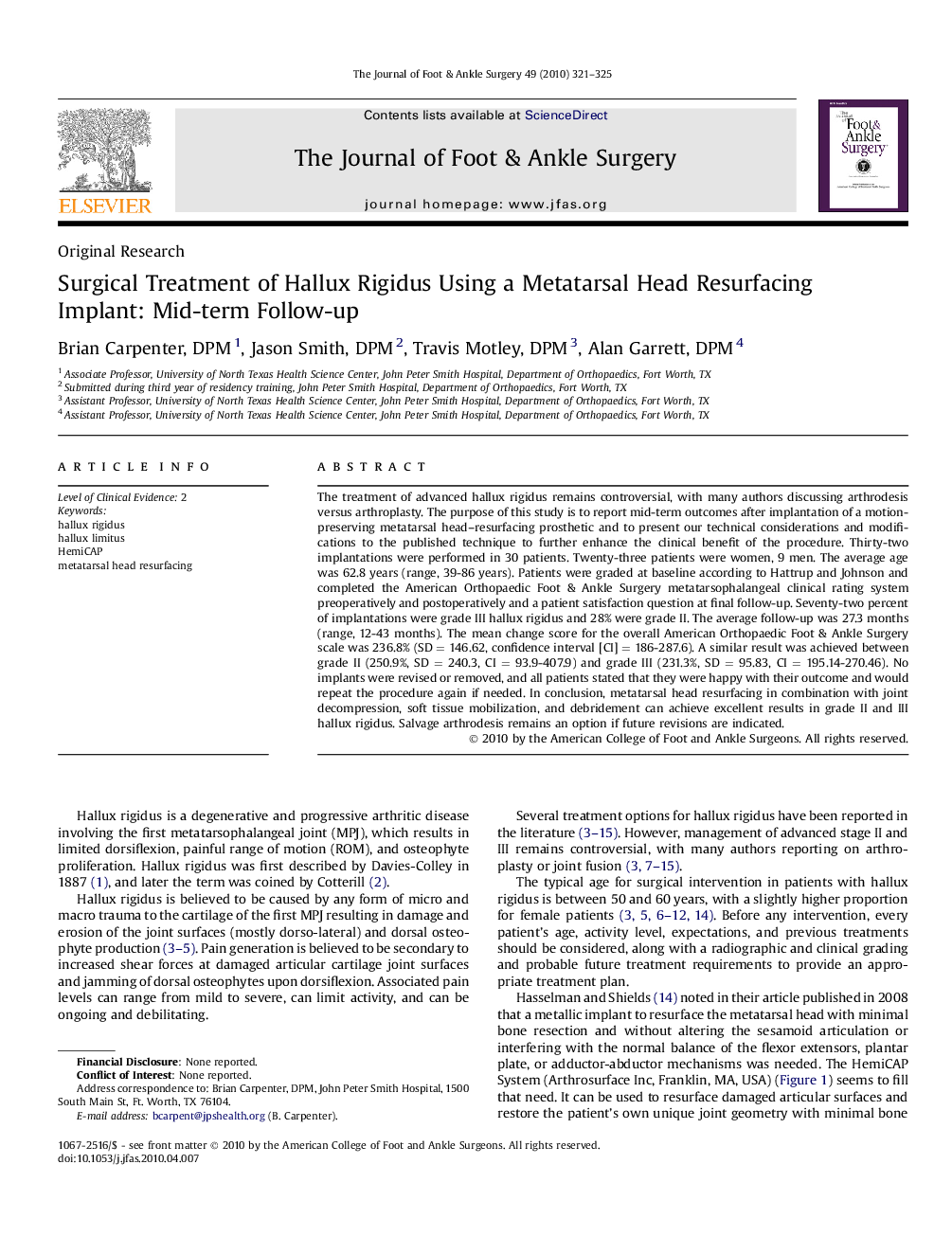| Article ID | Journal | Published Year | Pages | File Type |
|---|---|---|---|---|
| 2713400 | The Journal of Foot and Ankle Surgery | 2010 | 5 Pages |
The treatment of advanced hallux rigidus remains controversial, with many authors discussing arthrodesis versus arthroplasty. The purpose of this study is to report mid-term outcomes after implantation of a motion-preserving metatarsal head–resurfacing prosthetic and to present our technical considerations and modifications to the published technique to further enhance the clinical benefit of the procedure. Thirty-two implantations were performed in 30 patients. Twenty-three patients were women, 9 men. The average age was 62.8 years (range, 39-86 years). Patients were graded at baseline according to Hattrup and Johnson and completed the American Orthopaedic Foot & Ankle Surgery metatarsophalangeal clinical rating system preoperatively and postoperatively and a patient satisfaction question at final follow-up. Seventy-two percent of implantations were grade III hallux rigidus and 28% were grade II. The average follow-up was 27.3 months (range, 12-43 months). The mean change score for the overall American Orthopaedic Foot & Ankle Surgery scale was 236.8% (SD = 146.62, confidence interval [CI] = 186-287.6). A similar result was achieved between grade II (250.9%, SD = 240.3, CI = 93.9-407.9) and grade III (231.3%, SD = 95.83, CI = 195.14-270.46). No implants were revised or removed, and all patients stated that they were happy with their outcome and would repeat the procedure again if needed. In conclusion, metatarsal head resurfacing in combination with joint decompression, soft tissue mobilization, and debridement can achieve excellent results in grade II and III hallux rigidus. Salvage arthrodesis remains an option if future revisions are indicated.
